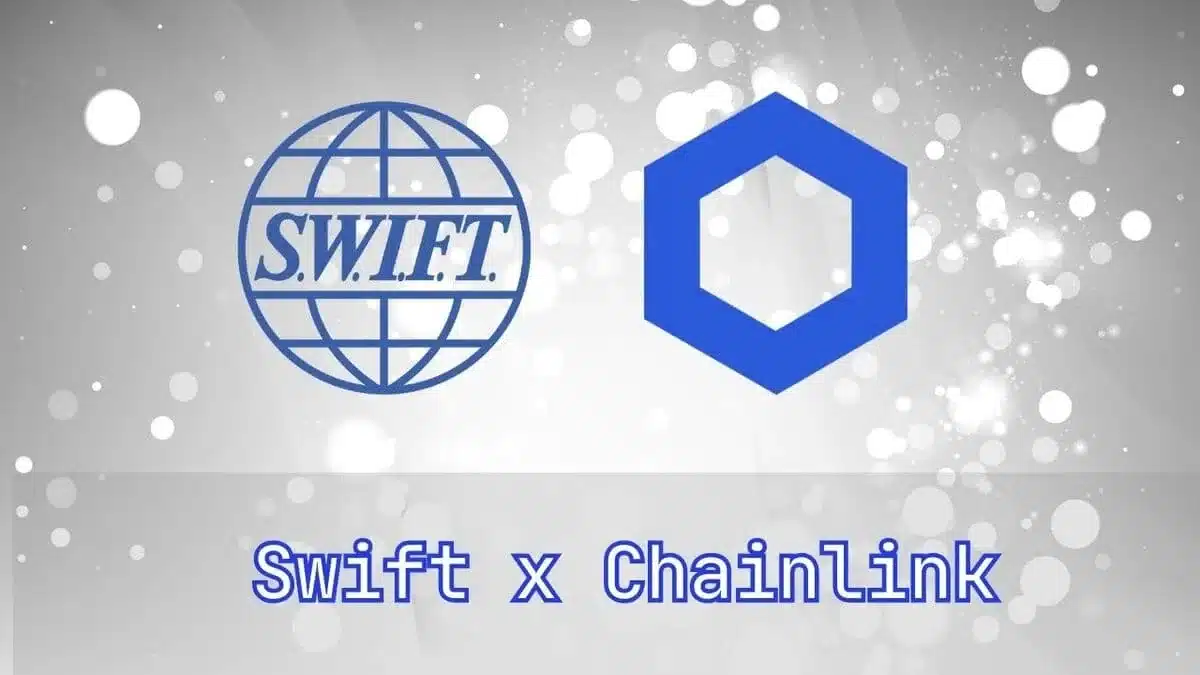- SWIFT’s new pilots with Chainlink and ConsenSys are enabling tokenized settlements for big banks like UBS.
- Analysts suggest Chainlink may be positioning against XRP in the race to be the “banker’s coin.”
- The competition between XRP’s payments focus and Chainlink’s interoperability model could shape which blockchain becomes the standard in global finance.
Crypto analyst CryptoRus has sparked debate in the digital asset community after suggesting that Chainlink (LINK) may be positioning itself as a direct competitor to XRP in the race to become the “banker’s coin.”
The claim comes as SWIFT, the global payments messaging network, expands its blockchain initiatives with major banking partners.
SWIFT, ConsenSys, and Chainlink Collaboration
SWIFT recently unveiled deeper collaborations with ConsenSys and Chainlink, designed to connect its vast financial network with multiple blockchains. According to CryptoRus, the effort builds on earlier tokenized asset pilots and now extends into the $100 trillion global fund settlement market.
A major highlight is a pilot involving UBS, the $6.6 trillion banking giant, which used SWIFT and Chainlink’s Cross-Chain Interoperability Protocol (CCIP) to tokenize fund subscriptions, redemptions, and settlements.
Also Read: Chainlink Congratulates SWIFT on New Blockchain Initiative – XRP Army Reacts
IS CHAINLINK COMING FOR XRP’S THRONE AS THE BANKER’S COIN?
While SWIFT builds a blockchain with @Consensys, they’ve also partnered with #Chainlink to connect their network to multiple blockchains. That started with tokenized asset pilots across major banks – and now it’s… https://t.co/d3ptjnGl7C pic.twitter.com/QhLBgHkPeV
— CryptosRus (@CryptosR_Us) September 30, 2025
The process worked as follows:
- UBS sent a standard SWIFT message to Chainlink’s Cross-Chain Reconciliation Engine (CRE).
- The CRE translated the message into blockchain instructions.
- On-chain settlement occurred seamlessly, while UBS continued operating within its familiar front-end system.
Banks Keep Front End, Blockchain Powers Back End
The key innovation here is that banks are able to retain their existing infrastructure while blockchain manages the back-end operations. This approach minimizes disruption to banking workflows while unlocking efficiency and transparency through tokenization.
“This is not hype. Chainlink wants the bankers’ rails,” CryptoRus emphasized.
Ripple vs. Chainlink: A Growing Rivalry?
The developments raise questions about whether Chainlink is now competing with Ripple’s XRP, which has long positioned itself as the bridge currency for global financial institutions. While XRP has focused on cross-border payments, Chainlink’s CCIP is demonstrating traction in fund settlement, tokenization, and interoperability.
For now, XRP still maintains a strong position as a recognized payments solution, but the momentum behind Chainlink’s pilots with top-tier banks may signal the start of a broader challenge in the institutional adoption race.
The Bigger Picture
As banks look to tokenize assets and modernize settlement systems, the battle for which blockchain solution becomes the standard is heating up. Whether XRP retains its status as the “banker’s coin” or Chainlink emerges as a dominant force could define the next phase of institutional crypto adoption.
Also Read: Pundit: ‘Panic In The Ranks? SWIFT’s New Move Only Proves XRP is Inevitable’ – Here’s Why

